Dr. Thomas Holtz Jr. stands as one of paleontology’s most influential figures, particularly in transforming how the public views Tyrannosaurus rex and other theropod dinosaurs. As a Principal Lecturer at the University of Maryland’s Department of Geology, Holtz has dedicated his career to unveiling the mysteries of prehistoric predators while simultaneously making paleontological science accessible to audiences of all ages. His research, publications, and public outreach efforts have dramatically shifted our understanding of T. rex from a lumbering lizard to an agile apex predator with surprising biological sophistication. Through his engaging communication style and scientific rigor, Holtz has bridged the gap between cutting-edge research and public knowledge, forever changing how we envision the king of dinosaurs.
Early Life and Academic Journey

Thomas Richard Holtz Jr. developed a fascination with dinosaurs at an early age, a passion that would ultimately shape his life’s work. Born in 1965, Holtz grew up during a time when dinosaurs were still popularly portrayed as slow, dim-witted creatures dragging their tails behind them. He pursued his undergraduate education at Johns Hopkins University, where he began to formally study paleontology and geology. Holtz then continued to Yale University, earning his PhD in 1992 with his dissertation on the locomotor evolution of tyrannosaurs, establishing himself early as an expert on these fascinating creatures. This academic foundation provided him with the credentials and knowledge base to eventually challenge long-standing misconceptions about T. rex and its relatives. His educational journey demonstrates how childhood fascination, when paired with scholarly rigor, can lead to revolutionary contributions in a scientific field.
Specialization in Theropod Dinosaurs

Dr. Holtz’s research centers specifically on theropod dinosaurs – the group that includes Tyrannosaurus rex and all carnivorous dinosaurs that eventually gave rise to modern birds. His focus on theropod systematics and functional morphology has made him a world authority on how these animals lived, moved, and evolved. Through detailed anatomical studies, Holtz has reconstructed the evolutionary relationships between different theropod groups, creating comprehensive family trees that help scientists understand how these predators developed their distinctive characteristics. His research methods combine traditional paleontological techniques with cutting-edge technologies like CT scanning and computational biomechanics. This specialization has allowed Holtz to speak with unique authority about T. rex’s place in the dinosaur world, giving him the scientific foundation to challenge outdated perceptions with evidence-based alternatives. His depth of knowledge in this niche has established him as the go-to expert for other scientists, media outlets, and educational institutions seeking accurate information about theropods.
Revolutionary Research on T. Rex Senses

One of Holtz’s most significant contributions came through his groundbreaking work on Tyrannosaurus rex’s sensory capabilities. Before his research, T. rex was often portrayed in popular media as primarily vision-dependent, but Holtz’s anatomical studies revealed a much more complex sensory apparatus. By analyzing brain case structures and comparing them with modern animals, he demonstrated that T. rex possessed exceptionally acute senses of smell and hearing, revolutionizing our understanding of how this predator interacted with its environment. His research showed that the olfactory bulbs in T. rex’s brain were proportionally enormous, suggesting a sense of smell potentially more powerful than any living land animal today. This finding dramatically changed scientific understanding of how T. rex hunted, suggesting it could track prey from considerable distances using scent rather than relying solely on visual detection. Holtz’s work on the dinosaur’s sensory adaptations has completely transformed how paleoartists depict the animal’s hunting behavior and has been incorporated into museum exhibits worldwide, showing T. rex as a sophisticated hunter rather than a simple brute.
Challenging the “Scavenger Theory”

In the 1990s and early 2000s, a controversial theory gained traction suggesting that Tyrannosaurus rex was primarily a scavenger rather than an active predator. Dr. Holtz played a crucial role in scientifically challenging this limited view of T. rex’s ecological role. Through detailed biomechanical analyses of T. rex’s body structure, sensory capabilities, and ecological context, Holtz presented compelling evidence that this dinosaur was both an opportunistic scavenger and a formidable predator. He emphasized that this false dichotomy between “predator” and “scavenger” rarely exists in nature, pointing to modern apex predators like lions and hyenas that both hunt and scavenge depending on opportunity. Holtz’s comprehensive approach included studies of T. rex’s running capabilities, bite force, sensory adaptations, and ecosystem position, building a multifaceted case for its predatory lifestyle. His work helped shift the scientific consensus back toward viewing T. rex as a dominant predator in its ecosystem, while acknowledging the complexity and opportunistic nature of its feeding strategies, providing a much more nuanced understanding than either extreme position.
Contributions to Dinosaur Speed and Locomotion Research
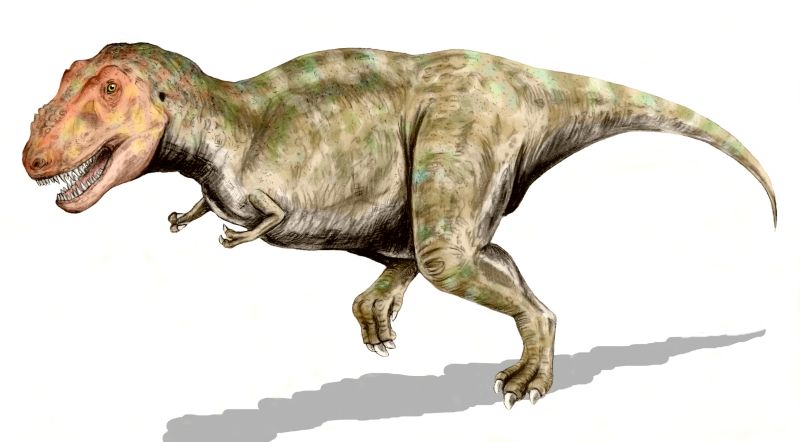
Dr. Holtz’s research on dinosaur locomotion fundamentally transformed our understanding of how T. rex and other theropods moved. His dissertation work established new methods for analyzing limb proportions and muscle attachment sites to estimate dinosaur running capabilities. Through detailed comparisons with modern animals and biomechanical principles, Holtz demonstrated that while adult T. rex was not the lightning-fast sprinter sometimes depicted in films, it was considerably more agile than earlier scientists had believed, capable of reaching speeds around 25-28 mph, faster than any human Olympic sprinter. Particularly significant was his work showing that juvenile tyrannosaurs would have been substantially faster than adults, suggesting potential hunting strategy differences across life stages. Holtz also pioneered research showing how tyrannosaur locomotion changed dramatically as they grew, with youngsters having proportionally longer, more slender limbs built for speed, while adults developed the massive power needed to take down large prey. This dynamic understanding of tyrannosaur movement across life stages has completely reshaped both scientific understanding and artistic depictions of these animals in museums, books, and films.
The “Dinosaur Encyclopedia” and Other Publications

Dr. Holtz’s influence extends far beyond academic circles through his prolific publishing career, most notably with his landmark book “Dinosaurs: The Most Complete, Up-to-Date Encyclopedia for Dinosaur Lovers of All Ages.” This comprehensive volume, published in 2007 with stunning illustrations by Luis V. Rey, has become a definitive reference work for dinosaur enthusiasts. Unlike many technical scientific publications, Holtz’s encyclopedia combines rigorous science with accessible language, making complex paleontological concepts understandable to general readers without sacrificing accuracy. The book has sold hundreds of thousands of copies and introduced countless young readers to scientifically accurate dinosaur information. Beyond his encyclopedia, Holtz has authored numerous scientific papers in prestigious journals like Nature and Science, along with chapters in technical volumes that have advanced theropod research. His publishing approach demonstrates a rare commitment to communicating science at multiple levels, from peer-reviewed research for specialists to educational materials for children, ensuring that accurate dinosaur information reaches diverse audiences regardless of their scientific background.
Media Presence and Public Education
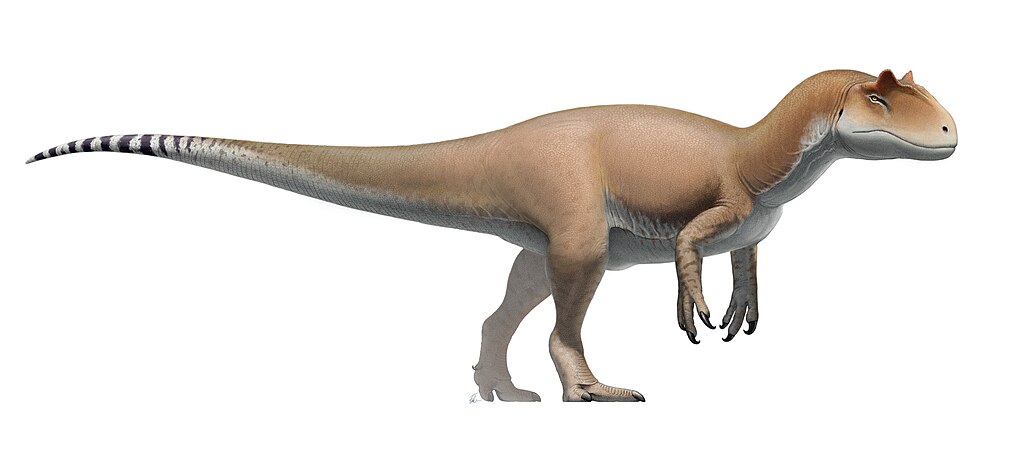
Dr. Holtz has established himself as one of paleontology’s most recognizable public faces through his extensive media work. He has served as a scientific consultant and on-camera expert for numerous dinosaur documentaries produced by the Discovery Channel, National Geographic, PBS, and the BBC, ensuring these programs present accurate, up-to-date information. His engaging communication style, characterized by infectious enthusiasm and clarity, makes him particularly effective at translating complex scientific concepts for general audiences. Holtz maintains an active social media presence where he directly engages with dinosaur enthusiasts, patiently answering questions and correcting misconceptions about T. rex and other dinosaurs. He regularly contributes to major news outlets when new dinosaur discoveries are announced, providing context and expert analysis that helps the public understand the significance of these findings. This consistent media presence has made Holtz a trusted authority whom journalists and producers turn to for reliable dinosaur information, allowing him to shape public perception far beyond what would be possible through academic publications alone.
Teaching and Mentorship

As Principal Lecturer at the University of Maryland, Dr. Holtz has influenced generations of students through his dynamic teaching style and mentorship. His legendary “Dinosaur Paleobiology” course regularly attracts hundreds of students from diverse majors, making it one of the university’s most popular science electives. Holtz employs innovative teaching methods that blend traditional lectures with interactive exercises, fossil examinations, and field trips, creating memorable learning experiences that stick with students long after graduation. Beyond the classroom, he has mentored numerous undergraduate and graduate researchers who have gone on to successful careers in paleontology, museum curation, and science education. Former students frequently cite Holtz’s mentorship as transformative, noting his exceptional ability to nurture scientific curiosity while maintaining rigorous standards. His teaching philosophy emphasizes critical thinking and evidence evaluation rather than mere memorization of facts, preparing students to engage with scientific information throughout their lives. Through this educational work, Holtz has created a multiplier effect, with each student he inspires potentially sharing accurate dinosaur information with countless others.
Museum Collaborations and Exhibit Design
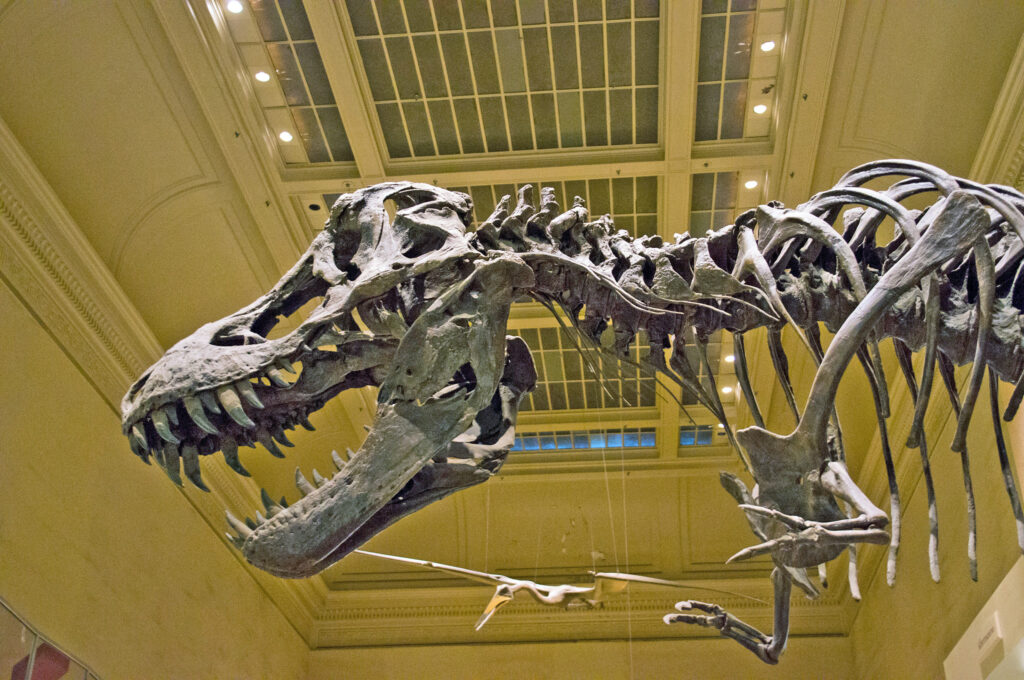
Dr. Holtz has significantly influenced how museums around the world present T. rex and other theropods to the public through his collaborations with major natural history institutions. Working closely with exhibit designers and paleoartists, he has helped create scientifically accurate representations that incorporate the latest research findings about dinosaur appearance, behavior, and ecology. His consulting work with the Smithsonian’s National Museum of Natural History was particularly influential in the development of their renovated dinosaur hall, which presents visitors with a dynamic, scientifically current vision of prehistoric life. Holtz brings meticulous attention to detail to these projects, ensuring everything from skeletal mounts to flesh reconstructions accurately reflects current scientific understanding. His input often extends beyond mere anatomical accuracy to include ecological context, helping museums create immersive exhibits that show dinosaurs as living animals within complex ecosystems. Through these museum partnerships, Holtz’s scientific expertise has directly shaped the dinosaur imagery seen by millions of visitors annually, creating lasting impressions that replace outdated mental pictures with evidence-based representations.
Influence on Paleontological Art
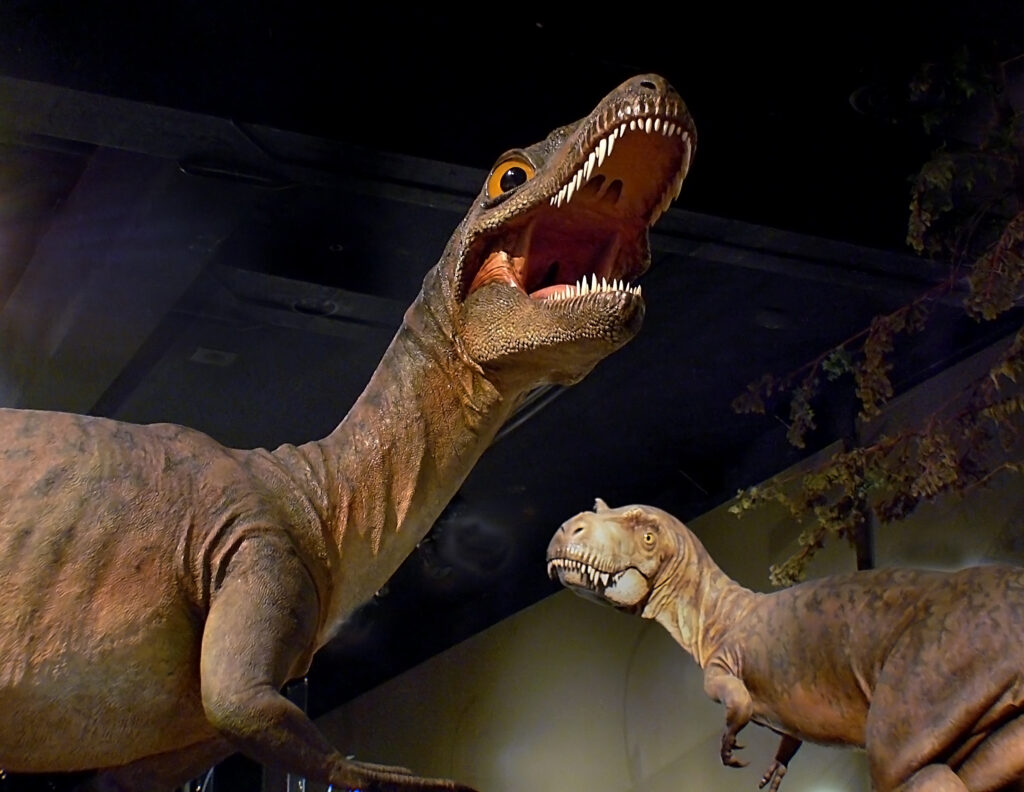
Perhaps no area shows Dr. Holtz’s impact on public perception more clearly than his collaboration with paleoartists who create visual reconstructions of extinct dinosaurs. By providing artists with detailed scientific information about T. rex anatomy, posture, and likely behavior, Holtz has helped transform dinosaur art from speculative illustration to science-based visualization. His partnerships with renowned paleoartists like Luis V. Rey and Julius Csotonyi have produced striking images that capture both scientific accuracy and dynamic vitality, showing T. rex as an active, alert predator rather than a sluggish reptile. Holtz emphasizes evidence-based reconstruction while acknowledging where artistic interpretation is necessary due to incomplete fossil evidence. His influence extended to how artists depict feathering in dinosaurs related to T. rex, ensuring popular images keep pace with emerging scientific evidence. These scientifically informed artworks appear in museums, books, magazines, and educational materials worldwide, creating a visual vocabulary that shapes how people envision dinosaurs. Through these artistic collaborations, Holtz has ensured that the public’s mental image of T. rex aligns much more closely with scientific understanding than was the case a generation ago.
Impact on Film and Documentary Portrayals
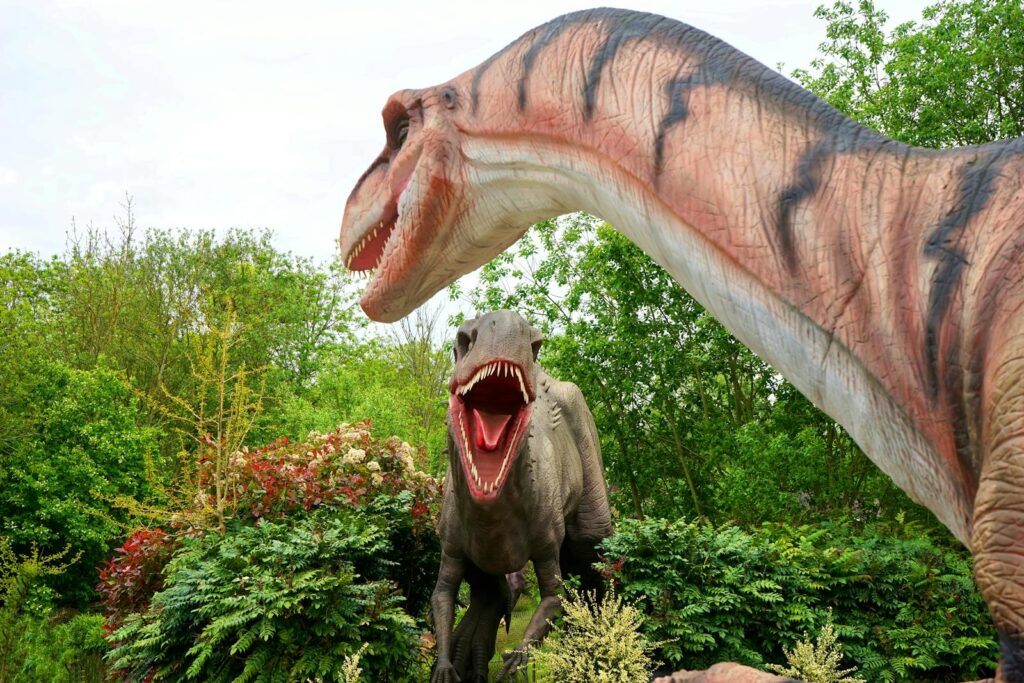
Dr. Holtz has played a crucial role in improving the scientific accuracy of dinosaur depictions in popular media, particularly through his work as a consultant for documentaries and films. His input has helped production companies move beyond sensationalized “monster” portrayals toward more nuanced, biologically plausible representations of T. rex and other theropods. When consulting on projects like the BBC’s “Planet Dinosaur” series, Holtz provided detailed information about dinosaur movement, behavior, and appearance, ensuring these productions incorporated current scientific understanding. He has been particularly effective at convincing filmmakers to portray dinosaurs as animals rather than monsters, emphasizing behaviors that would have evolutionary logic rather than simply creating dramatic scenes. While recognizing that entertainment media must balance scientific accuracy with storytelling needs, Holtz has consistently advocated for productions that respect the available evidence while still creating compelling narratives. His influence can be seen in the evolution of dinosaur documentaries over the past two decades, which increasingly present these animals within scientifically credible ecological and behavioral contexts rather than as simple movie monsters.
Correcting Persistent Misconceptions

Throughout his career, Dr. Holtz has dedicated significant effort to addressing common misconceptions about T. rex and other dinosaurs that persist in public understanding. He regularly tackles myths such as the incorrect notion that T. rex couldn’t see stationary objects or that its arms were entirely useless, providing evidence-based corrections through his books, lectures, and media appearances. Holtz patiently explains that many popular beliefs about dinosaurs stem from outdated science or Hollywood inventions rather than fossil evidence. He has been particularly effective at addressing widespread confusion about dinosaur taxonomy, helping the public understand that animals like Pterosaurs and Dimetrodon were not dinosaurs, while birds are living dinosaurs. His approach to misconception correction balances scientific accuracy with accessibility, acknowledging why certain misunderstandings develop while gently steering people toward more accurate information. Rather than dismissing popular interest in dinosaurs, Holtz leverages this enthusiasm as a teaching opportunity, using familiar misconceptions as entry points to explain how scientists study prehistoric life. This persistent myth-busting has gradually elevated public understanding, replacing simplistic dinosaur concepts with more sophisticated, evidence-based knowledge.
Legacy and Continuing Influence

Dr. Holtz’s legacy continues to grow as his research, teaching, and public communication shape both scientific understanding and popular perceptions of T. rex and other dinosaurs. His influence can be measured not only through his academic contributions but also through the countless individuals who have developed a more accurate understanding of dinosaurs through his work. Future generations of paleontologists cite his books and lectures as formative influences that inspired their scientific careers. Museum exhibits worldwide reflect his research findings, ensuring visitors receive scientifically current information about dinosaur biology and behavior. The improvement in media portrayals of dinosaurs over recent decades owes much to Holtz’s persistent advocacy for evidence-based representations. His teaching materials continue to be used in classrooms around the world, extending his educational impact far beyond his immediate students. Perhaps most significantly, Holtz has demonstrated that rigorous scientific research can be effectively communicated to public audiences without sacrificing accuracy, creating a model for public science communication that other researchers increasingly follow. Through this multifaceted approach combining research excellence with exceptional public engagement, Dr. Thomas Holtz has fundamentally transformed how society understands and envisions the most famous dinosaur of all.
Dr. Holtz’s Role in Changing the Way We See T. rex
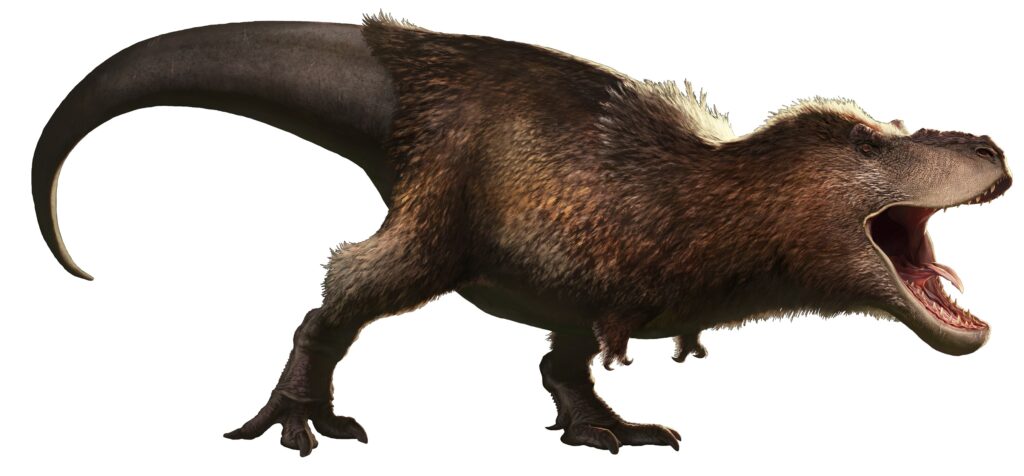
Dr. Thomas Holtz’s remarkable career exemplifies how one scientist can transform public understanding through a strategic combination of rigorous research and effective communication. By challenging outdated perceptions of Tyrannosaurus rex and replacing them with evidence-based alternatives, Holtz has forever changed how we envision these iconic prehistoric predators. His work bridges the often considerable gap between paleontological research and public knowledge, demonstrating that scientific accuracy and public engagement can go hand-in-hand. As dinosaurs continue to captivate new generations, Holtz’s influence ensures that their fascination will be built upon solid scientific foundations rather than outdated myths. Through his ongoing work, the image of T. rex in our collective imagination continues to evolve from simplistic monster to sophisticated predator, bringing us ever closer to understanding these extraordinary animals as they truly were.




